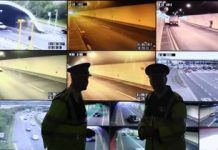Recently, the facial recognition technology team from Dahua Technology presented their results for Labeled Faces in the Wild (LFW), a worldwide authoritative facial recognition database test set established by the University of Massachusetts and widely used by the main players in the field of facial recognition. According to the company, with a series of technical improvements, the Dahua-Faceimage facial recognition system was not only ahead of Google, Facebook, Baidu, and Tencent, it also set a new LFW record and placed Dahua’s facial recognition technology in a world leading position.
LFW was established in 2007 by the University of Massachusetts and is used to evaluate the performance of facial recognition algorithms under unconstrained conditions. It is the most widely used evaluation set in the field of facial recognition. Up until now, a few dozen teams from around the globe have provided more than 80 test results. These teams come from companies including Google, Facebook, Microsoft Research Asia, Baidu, Tencent, Sensetime, Face++, Chinese University of Hong Kong and other leading teams from industry and academia. Many of the top ranking methods have played a crucial role in promoting the development of facial recognition technology.
In recent years, most of the improvement in facial recognition technology has been achieved by the development of deep learning. Deep learning is a machine learning approach that simulates the human neural system. The functions of Convolutional Neural Networks (a commonly used deep learning model) are closely related to network depth. However, since deep networks are difficult to optimise, the network depth for facial recognition methods of the past generally range from a few to a few dozen layers. Dahua’s facial recognition technology team has designed a network with a depth of over a hundred layers (according to Dahua this currently represents the deepest network layers amongst facial recognition systems that have been announced). This enables a new type of metric learning method which allows the similarity score to be higher for images of the same person. At the same time it lowers the similarity score between images of two different people. Combined with a highly efficient online sampling technique, the rate of convergence can also be greatly increased. By training multiple models and using a non-linear multi-model integration technique, Dahua has achieved an accuracy of 99.78% for the LFW dataset.







